PRP & PRF Treatments
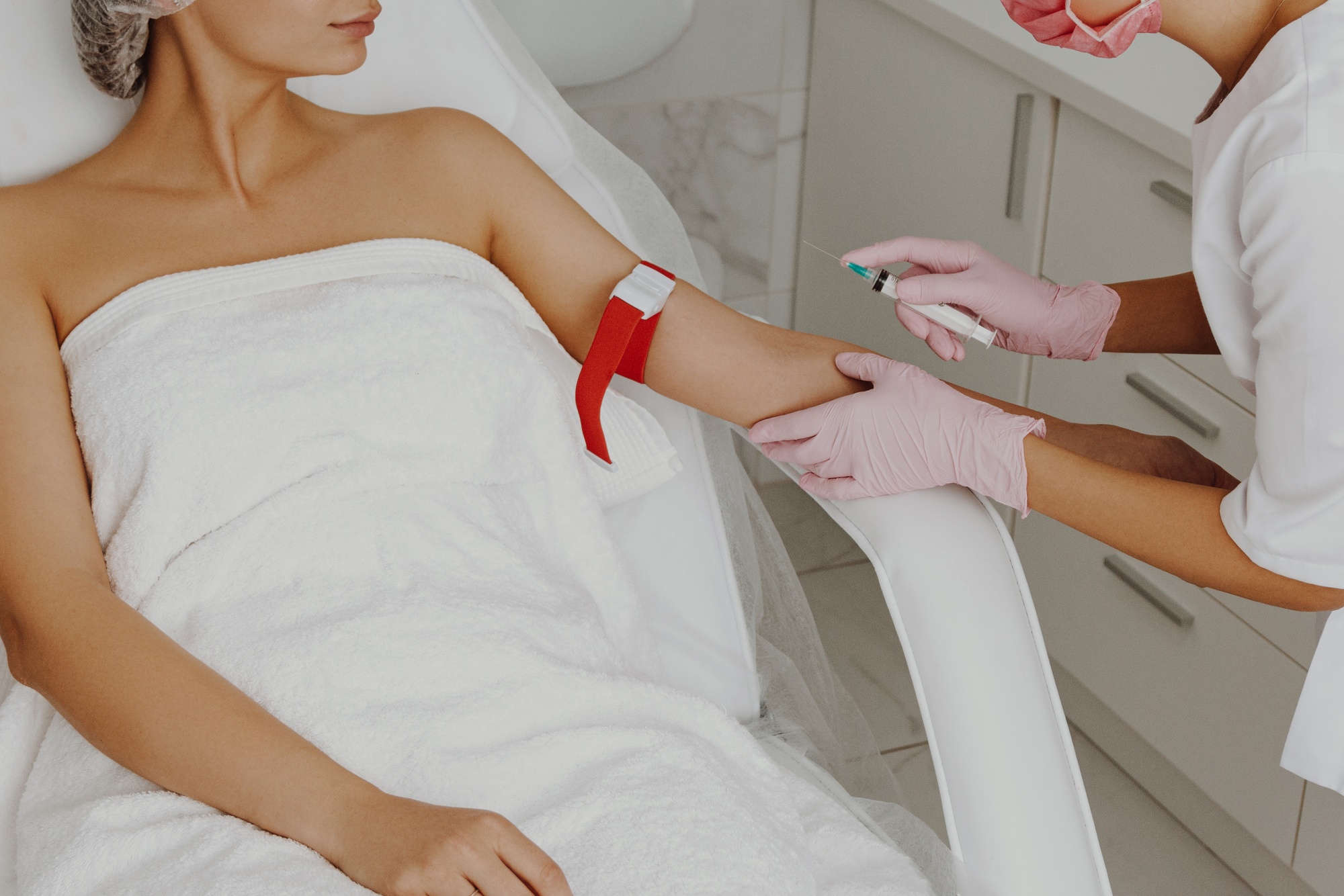
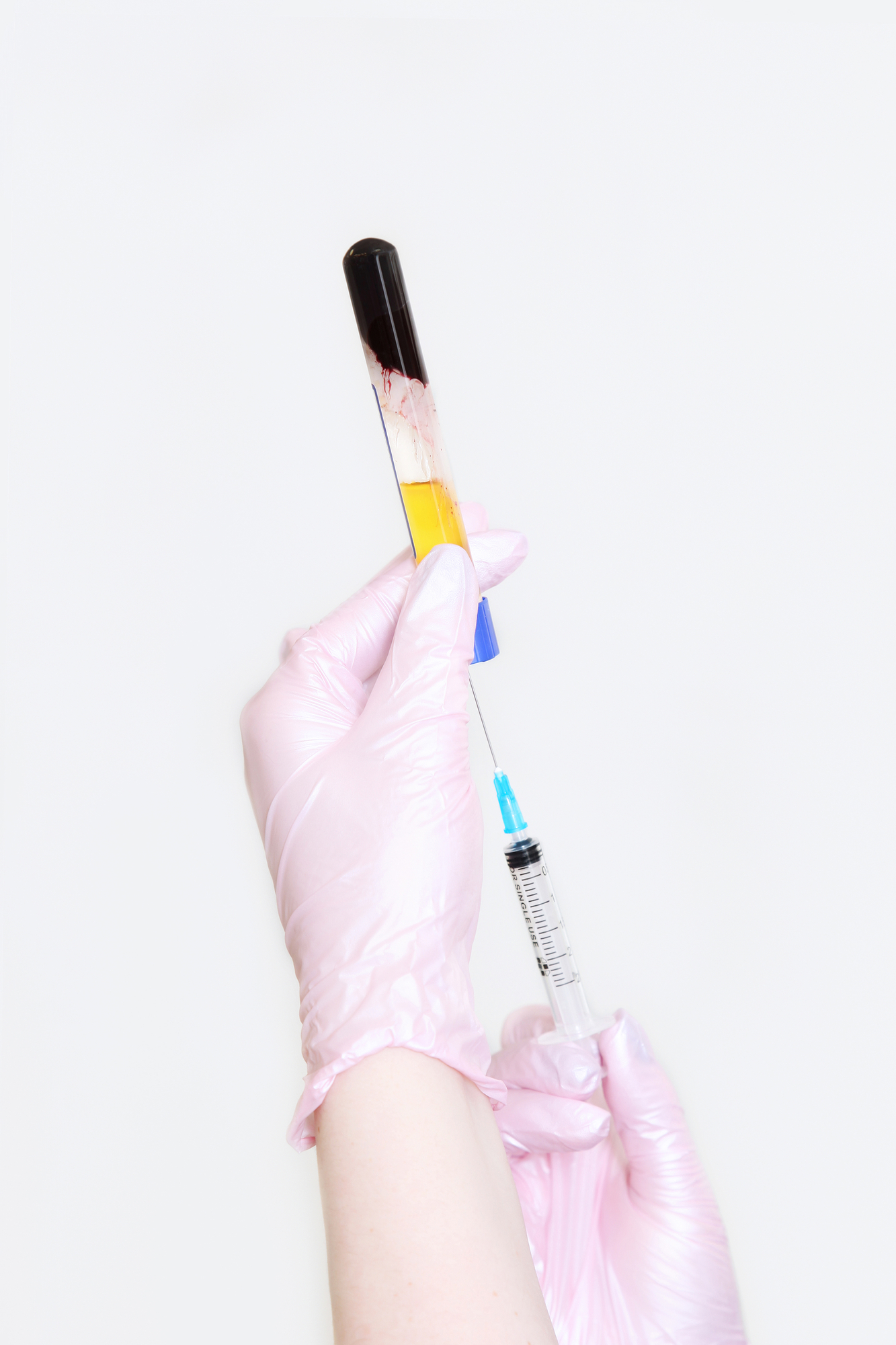
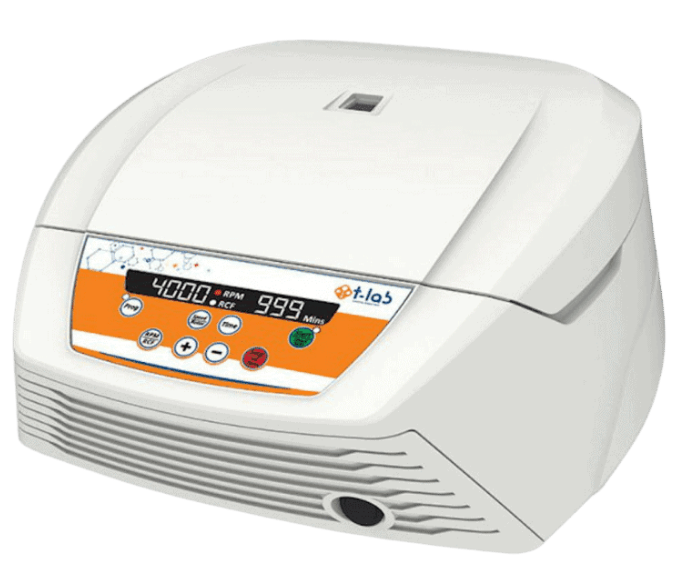
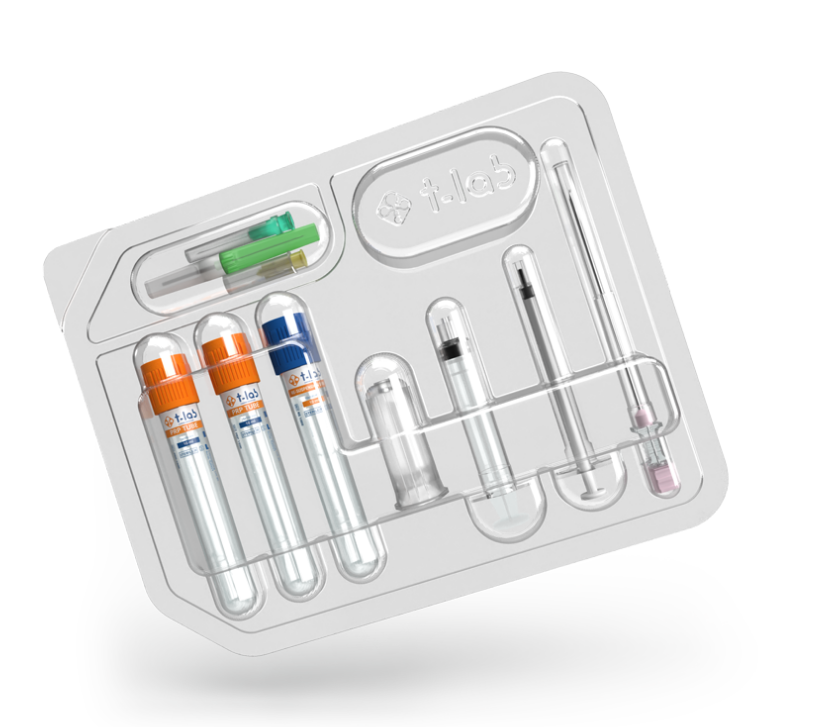
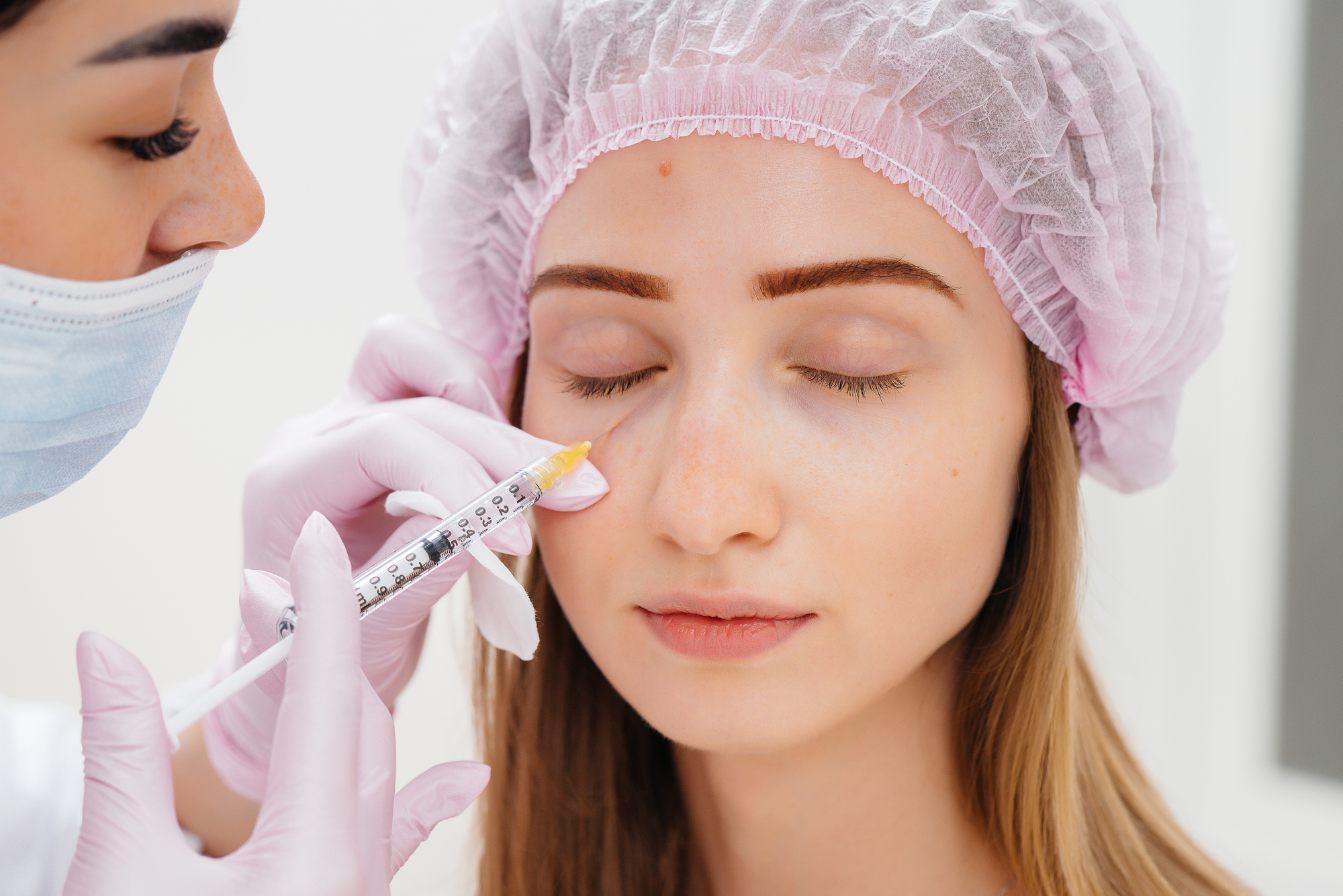
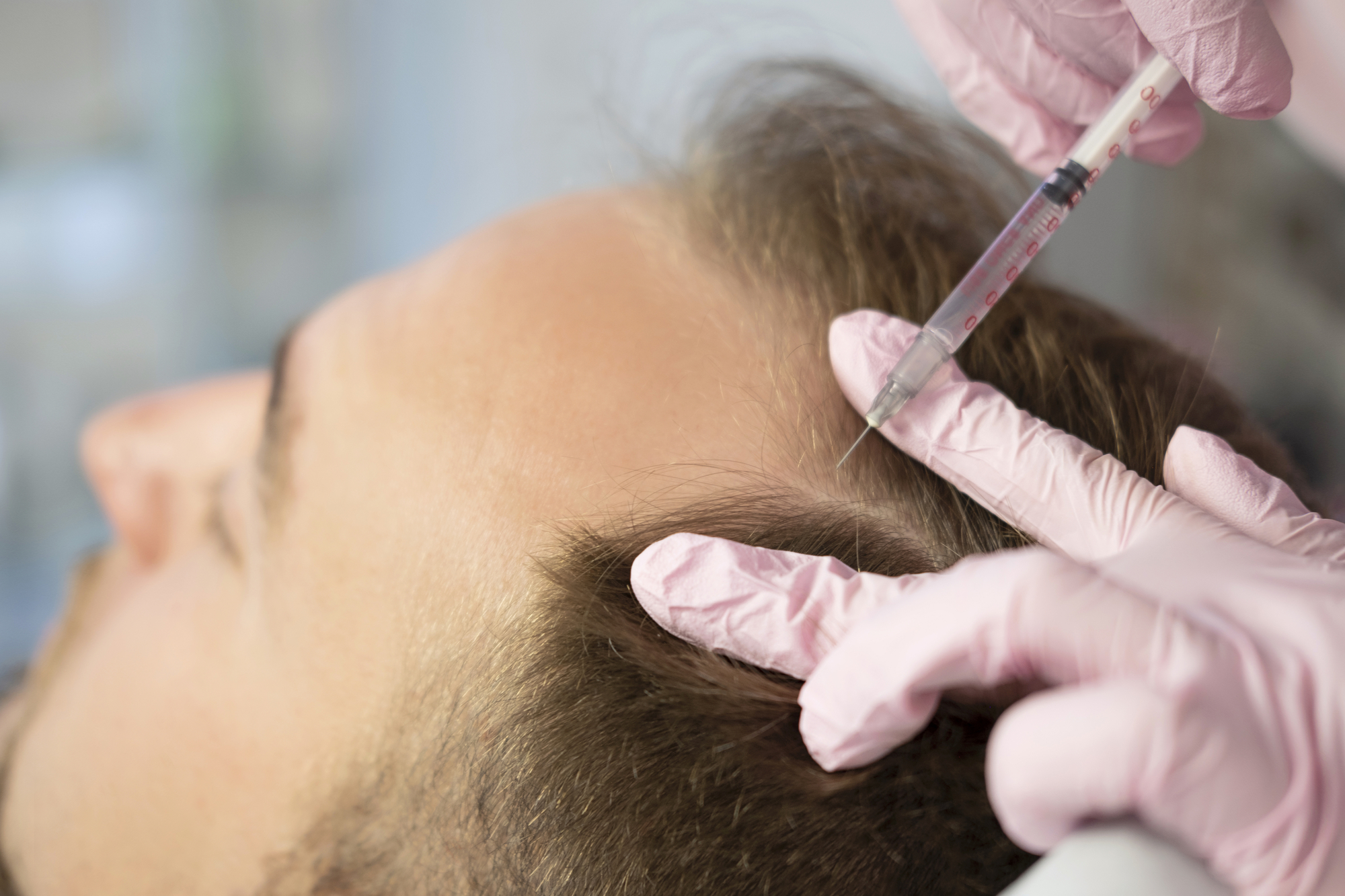






PRP & PRF Treatments: Skin Quality & Hair Health
LEARN MORE →
PRP and PRF procedures involve utilising the patient’s own blood, which is placed into Clinical Tubes and then centrifuged. This leads to the preparation of autologous platelet-rich-plasma (PRP) and fibrin (PRF) which can then be extracted and re-injected into the patient’s target tissue.
With the protocols developed, the kit offers an optimal platelet recovery rate, platelet dose and purity:
4.4 billion platelets | 95.2% purity | 85.2% recovery rate
Platelets, also known as thrombocytes, are small, colourless cell fragments in the blood. They are primarily known for their importance in clotting blood, but interestingly contain hundreds of proteins called growth factors. To obtain platelets, blood is taken from the patient and spun in a centrifuge. This leads to the separation of PRP (from the other blood components), which contain between 5 to 9 times the platelet concentration of regular blood. Compared to PRP, PRF has a higher concentration of platelets, fibrin, stem cells and white blood cells.
Both PRP and PRF are considered safe in respects to no allergic reaction should be encountered, as it uses your own blood. However, these treatments cannot be carried out if you have a blood or bleeding disorder, or taking anti-clotting or blood thinning medications.
A PRP and PRF Treatment at LA Lips® includes a personalised skin consultation with a certified cosmetic specialist utilising the TGA-Listed T-Lab™ Kits by AVADERM®; the world’s leading and most innovative platelet-rich plasma PRP (ARTG No. 325702) and fibrin PRF (ARTG No. 419610) system, and state-of-the-art T-Lab™ Swing-Out Rotor Centrifuge (ARTG No. 325701).
It is optional, though highly recommended when clinically appropriate, to administer the product using the Medical-Grade crystal meso multi-injector handpiece, manufactured by NOBAmedi™, TGA-Listed (ARTG No. 314702). Featuring spill-free technology, accurate injection depth control, and versatile multi-needle options – including the 9-pin needle head for skin treatment and the 5-pin needle head for scalp/hair treatment (ARTG No. 319284) – this device ensures efficient, consistent, and targeted delivery of the product. The result is a faster procedure, reduced client discomfort, minimal product waste, and enhanced treatment effectiveness, offering both practitioners and clients an optimal experience.
Note: LA Lips® provides injectable platelet-rich fibrin I-PRF+. I-PRF+ is an advanced injectable version of PRF.
Speak to a Healthcare Practitioner
Skin Rejuvenation
What To Expect: PRP & PRF Skin Treatment
• You will have a consultation with a qualified clinician to assess skin concerns and suitability for PRP and PRF treatment.
• This will involve a review of medical history and any contraindications, discussion of treatment goals and expected outcomes, explanation of the treatment and what to expect during the session.
• The treatment area will be thoroughly cleansed to remove any makeup, sunscreen, or oils.
• A topical numbing cream is applied and left on the skin for approximately 15 minutes to minimise discomfort during treatment.
• The area where your blood will be collected (typically the inner arm) will be carefully cleansed with an antiseptic solution prior to the draw to help minimise any risk of infection.
• Depending on the prescribed treatment, our team of certified providers will follow T-Lab’s™ Protocols to estimate how many tubes required / how much blood to collect and draw up as required.
• The treatment area is wiped again with an antiseptic solution removing the numbing cream before skin penetration to reduce the risk of infection.
• PRP or PRF is delivered by microinjections to the targeted areas using fine needles. When suitable (particularly for larger treatment areas) PRP and PRF is delivered by a multi-needle injector device, reducing treatment time by 30-50%, enhancing client comfort, consistent application and controlled injection depth.
• You may feel mild pressure, stinging, or pinprick sensations during application.
• The procedure typically takes 30–45 minutes depending on the area treated.
• After the treatment is complete, your clinician will apply an accelerated and concentrated serum and lightweight moisturising crème, precisely tailored to hydrate and support the skin’s natural healing abilities.
• To conclude, we apply a cosmeceutical SPF 50+ sunscreen for added protection.
• Post-treatment, we highly recommend 20 minutes under the LED Light (Near-Infrared Light) to to support deep skin repair, reduce inflammation, and enhance cellular recovery for optimal healing and results.
• Mild redness, swelling, or small raised bumps at injection sites are normal and usually subside within 24–72 hours.
• Tiny bruises or pinprick marks may appear and typically resolve within a few days.
• Results are best seen with a course of 4 sessions, spaced 4-6 weeks apart, often as part of a treatment plan. Top-up treatment is recommended every 6 months to maintain and nurture the condition of your skin and overall glow.
• No sun exposure or tanning (including fake tan) for at least 2 weeks – use SPF 30+ or higher daily on treated areas.
• Avoid hot showers, saunas, spas, and steam rooms for 24–48 hours – heat can increase swelling and irritation.
• Avoid active skincare products for 2–5 days, including: Retinol, AHAs (like Glycolic Acid), BHAs (Salicylic Acid), Benzoyl Peroxide, and Vitamin C.
• Do not cleanse or rub the treated area on the day of treatment – allow the skin to settle.
• No makeup for 24 hours (or longer if pinpoint marks persist).
• Do not scrub, exfoliate, or pick at the treated area – until fully healed.
• No intense exercise for 24 hours, to reduce risk of overheating and irritation.
• Avoid alcohol and smoking for at least 24 hours, as alcohol can thin the blood (worsening bruising), and smoking impairs tissue oxygenation – both of which negatively affect PRP’s regenerative effects.
Optional Add-Ons
+ Skin Needling (Vampire Facial)
Dermapen® Microneedling Device (ARTG No. 356305)
Combining PRP with Skin Needling enhances topical absorption and stimulates a synergistic response in collagen production and tissue regeneration – commonly referred to as a “Vampire Facial”. This treatment may support improved skin texture, tone, and overall dermal quality.
Near-Infrared LED Light
MediLUX® LED Device (ARTG No. 317123)
Post-treatment, we highly recommend 20 minutes under the LED Light (Near-Infrared Light) to support deep skin repair, reduce inflammation, and enhance cellular recovery for optimal healing and results.
Hair Growth
For addressing hair loss concerns, PRP and PRF can be a very effective solution. Research suggests injecting the platelets found in your own blood and activating growth factors can improve the blood supply to the hair follicles and increase the thickness of the hair shafts. PRP is effective in stimulating hair growth, while PRF provides longer term support for new cell growth. A combination of PRP and PRF Treatment are a popular choice to obtain the benefits of each; supporting new hair growth, thickening the hair shafts and reducing shedding.
What To Expect: PRP & PRF Scalp/Hair Treatment
• You will have a consultation with a qualified clinician to assess scalp and hair health concerns and suitability for PRP and PRF treatment.
• This will involve a review of medical history and any contraindications, discussion of treatment goals and expected outcomes, explanation of the treatment and what to expect during the session.
• The treatment area will be thoroughly cleansed and disinfected using a suitable antiseptic solution.
• A topical numbing cream is not advised to be applied to the scalp due to increased risk of infection.
• The area where your blood will be collected (typically the inner arm) will be carefully cleansed with an antiseptic solution prior to the draw to help minimise any risk of infection.
• Depending on the prescribed treatment, our team of certified providers will follow T-Lab’s™ Protocols to estimate how many tubes required / how much blood to collect and draw up as required.
• PRP or PRF is delivered by microinjections to the targeted areas using fine needles. When suitable (particularly for larger treatment areas) PRP and PRF is delivered by a multi-needle injector device, reducing treatment time by 30-50%, enhancing client comfort, consistent application and controlled injection depth.
• During application, you may feel discomfort and experience the sensation as a series of small pinches or pricks, similar to tiny injections or microneedling over the scalp.
• The procedure typically takes 30–45 minutes depending on the area treated.
• After the treatment is complete, leave the area completely clean and dry for at least 4-6 hours, ideally until the next day.
• Cosmeceutical SPF 50+ sunscreen is only applied to the treatment area if the scalp is visibly exposed to the sun; however a broad-brim hat is the safest option for sun protection post-treatment.
• Mild redness, swelling, or small raised bumps at injection sites are normal and usually subside within 24–72 hours.
• Tiny bruises or pinprick marks may appear and typically resolve within a few days.
• Results are best seen with a course of 6 sessions, spaced 4 weeks apart, often as part of a treatment plan. Top-up treatment is recommended every 6 months to support ongoing follicle stimulation and help maintain improvements in hair density and scalp health.
• No sun exposure or tanning for at least 2 weeks.
• Avoid hot showers, saunas, spas, and steam rooms for 24-48 hours – heat can increase swelling and irritation.
• Avoid washing your hair and using hair styling products for at least 24 hours.
• Do not rub the treated area on the day of treatment – allow the skin to settle.
• Do not scrub, exfoliate, or pick at the treated area – until fully healed.
• No intense exercise for 24 hours, to reduce risk of overheating and irritation.
• Avoid alcohol and smoking for at least 24 hours, as alcohol can thin the blood (worsening bruising), and smoking impairs tissue oxygenation – both of which negatively affect PRP’s regenerative effects.
PRP & PRF Treatment Modalities
PRP | Stimulates the natural regeneration process, promoting collagen production and the growth of new skin cells. This results in a brighter, more even complexion without the risks associated with harsh chemicals. Aids in the treatment of fine lines, wrinkles, poor skin texture, acne, scarring, and hyperpigmentation.
PRF | Offers the same stimulation of PRP and the natural regeneration process. I-PRF+ has a thicker viscosity, aiding in deeper wrinkles, hollows, and advanced signs of ageing.
PRF | Due to its gel-like consistency, it provides temporary volume to areas like facial lines and hollows. Its primary benefit is stimulating collagen production for improved skin quality rather than substantial volume replacement – essentially acting as a “natural” filler with a shorter duration compared to dermal fillers.
PRP | Addresses dark circles, bags, superficial wrinkles, and shallow hollows under the eyes.
PRF | Addresses dark circles, bags, heavy wrinkles, and deeper hollows under the eyes.
PRP | Stimulates the growth of hair for patients with hair loss and alopecia.
PRF | Aids in long-term support of new cell growth for patients with hair loss and alopecia.
Benefits, Risks & Contraindications of PRP & PRF Treatment
• Improves overall skin texture and tone.
• Promotes natural collagen production.
• Enhances skin hydration and elasticity.
• Helps reduce the appearance of fine lines and wrinkles.
• Improves the look of acne scars and enlarged pores.
• Supports skin healing and regeneration.
• Strengthens the skin barrier.
• Utilises your own blood, reducing risk of allergic reaction.
• Mild discomfort or stinging during treatment.
• Redness and swelling at injection sites for 12-48 hours.
• Pinpoint bruising may occur for 2-5 days.
• Temporary dryness or flaking as the skin regenerates.
• Risk of infection if aftercare instructions are not followed.
• Skin cancer.
• Pregnancy or breastfeeding.
• Active skin infections (cold sores, acne cysts, impetigo) at or near the treatment site.
• Open wounds, cuts, or abrasions in the treatment area.
• Severe inflammatory skin conditions, such as eczema or psoriasis in the treatment area.
• Bleeding disorders or use of blood-thinning medications (aspirin).
• Autoimmune diseases affecting skin or connective tissue (lupus, scleroderma).
• Uncontrolled diabetes or other systemic health conditions that impair healing.
• Recent chemical peels or laser treatments on the same area (within the past 2–4 weeks).
• Tanned skin or recent sun exposure (within the past 2–4 weeks).
